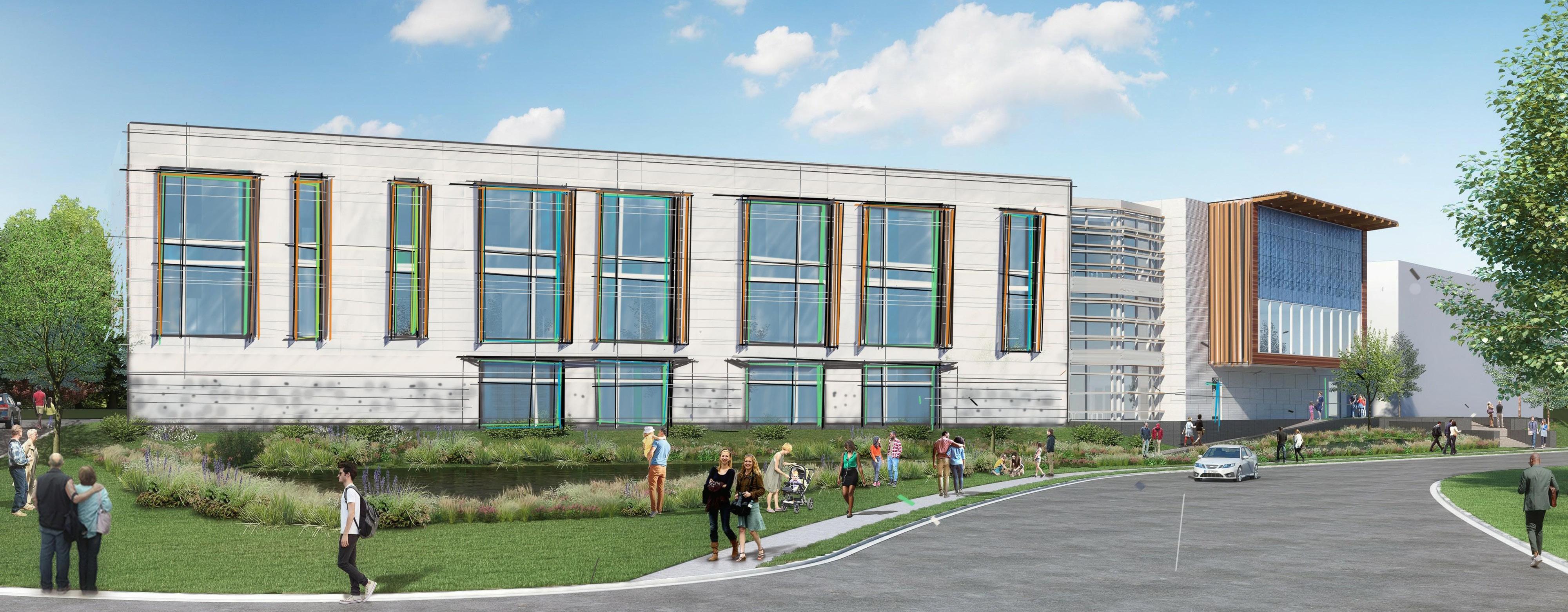Empowering Innovation with Computational Design

Ethan Atherton AIA Architect



Ethan Atherton AIA Architect

I recently attended the Advancing Computational Building Design Conference in Austin, TX with Ruth Parr and Michael Wagner of LS3P, and we enjoyed immersing ourselves in a topic that is changing the way we think about design. Computational design – the process of using algorithms combined with computational tools to enhance and automate design tasks – has the potential to transform the practice of architecture.
We learned that while computational design can increase efficiency, the real benefit comes from compounding knowledge and harnessing the value added to our work. Computational thinking helps us define, formulate, and expand our design solutions around more innovative and complex design challenges. Chasing efficiency is a common pitfall; instead, firms should be focused on chasing the right questions and elevating design excellence.
Computational design is typically focused on generative design (which is driven by inputs such as building height and width), optimization (which is driven by outcomes such as maximum yield, maximum transparency, glare ratio, or other factors), simulation (calculations or visualizations), or Artificial Intelligence/Machine Learning integration (predictive analysis or clash detection).
While computational thinking is software agnostic and should always come first, the computational tool is built around software applications. There are cases like digital fabrication or performance analysis where the output is meant to be exported, for example sustainability data (Excel or Csv) or geometry for digital fabrication (3D printing or laser cutting). Other cases could be tied to collaboration (like model coordination) or automation (like automated tagging and dimensioning).
Traditionally, Dynamo (for Revit) and Grasshopper (for Rhino) are the go-to tools for creating “scripts,” programs that can be run to implement a computational workflow within a software. However, emerging technologies are replacing or absorbing
computational workflows every few months. Like most things, the right tool depends on what and when. It also depends on who’s using it and how it’s being used. This informs deployment, support, and user experience, all of which relate directly back to tools and techniques.
Computational design generally falls under three categories: practice-driven efforts, enterprise-driven efforts (firmwide initiatives), and tactical strategies
Enterprise-driven efforts might be led by a firm’s Digital Practice and Design Technology teams, guided by firmwide goals or needs. These efforts could be related to improving common processes and project/space typologies, connecting different platforms, or supporting core systems and strategic plans. Examples include sustainability simulations like daylighting studies, interior test fits, or parametric conceptual design studies. Workflows can be published as self-deployable scripts accompanied by instructional resources or ondemand training videos. These scripts can be integrated into core tools as plug-ins or Dynamo/ Grasshopper “Player” scripts with
user-friendly interfaces to make these tools accessible to a wide range of team members.
Practice-driven solutions, on the other hand, will be developed by or within project teams, and will be more localized per office or sector. These solutions will usually be more closely held to project specifics of geometry or site studies; client –specific needs like documentation standards; jurisdictional requirements like building code compliance; sectorbased solutions like components for modular living or healthcare; or development studies like test fits, optimization, complex geometries, interoperability, or visualization. These applications will usually be collaborative, iterative, or responsive with development from a local team member and feedback from a project manager or architect.
Tactical solutions may be sourced from practice or enterprise, but usually require investing more resources and are best directed towards new services (test fits, master planning, or digital twinning); revenue generators (data, warehouse, or modular); or firmwide commitments (AIA 2030 reporting).

At LS3P, a grassroots computational design resource group is helping to strategize, align, consult, and elevate efforts across our 12 offices. Our computational design practitioners around the firm (we call them “sleeper agents”) are piloting test cases that are already streamlining workflows and providing exciting design solutions.
Supporting Implementation with Training and Resources
Successful integration of computational design and practice will require upskilling and continuous learning as technologies evolve.
At LS3P, general software training options are available through in-house training platforms; targeted training could also be led by members of our Digital Practice team, Design Resource Group, or members of our various internal Knowledge Teams. Those who are currently leading grassroots computational design efforts will be invaluable resources as we grow our capabilities in this area. Shining a spotlight on their efforts, building a library of test cases, and incentivizing others to dive into parallel explorations will help to build momentum around further research and innovation in this area.
Blending Deep Regional Expertise with Computational Design Capabilities
Rhino and Grasshopper are commonly used in architectural schools, so it’s not unusual for students to enter the workforce with more experience in Rhino than Revit. Leveraging these skills that emerging professionals bring to the table (while also upskilling in core competencies like Revit) dramatically expands our bandwidth.
LS3P’s regional expertise gives us a deep understanding of local challenges and requirements, especially relating to
jurisdiction, building performance, and resilience. We have the opportunity to lead a modern vernacular language, validated through data-driven studies and simulations, to demonstrate expertise in our climate, energy, and jurisdictional regions. Our growing momentum and focus on data will support continuous improvement in the design process, which adds better value to our clients and communities.
In future years, the Southeast may become a “megaregion” fueled by inbound migration. Designers have the ability to shape smart growth across the region. Places like Atlanta

(a major transportation hub), Charlotte (a major financial center), and the Triangle (a major research node) will need design solutions driven by data, research, and innovation as they grow. Computational design/computational thinking presents the opportunity to be more intentional and recursive, and in ways that we can measure, as we use these evolving tools to add value to our communities.
Elevating computational design will require solutions from the bottom up, from the top down, and from the middle. Grassroots explorations are laying the groundwork for more formalized resources to manage computational design knowledge, develop a culture around adoption, and incubate marketable strategies. Practitioners need a dedicated space (at LS3P, our FRANK platform is an ideal solution) to crowd-source solutions, document workflows, and centralize resources. This shared resource creates a space for visibility, accessibility, and initiative – eliminating barriers for entry with “implied permission.” This knowledge community, centered around discovery and self-navigation, can clearly communicate what platforms are supported and available, and how to contribute. Then, by having a conduit
for support via request, guidance, training, or forum community, we can enable problem solving and generate self-starters.
Connecting documented solutions back to project teams, building types, design services, and departments
starts to introduce a vocabulary that becomes part of a firm’s language and design culture, building a framework for connecting design solutions laterally or vertically along our project ecosystem. For example, a workflow for an acoustic study could be conveyed back to a space type for conferences rooms, which could apply to a whole sector. Having these profiled solutions could make workflows more discoverable and relatable as we build knowledge and capacity in computational thinking.

Ethan Atherton, AIA is an architect on LS3P’s Digital Practice team. Ethan joined the firm in 2018 after earning a Master of Architecture from NC State University, following a Bachelor of Science in Architecture from Western Kentucky University. Over the years, Ethan worked on civic and healthcare related projects before switching over to Digital Practice, supporting and implementing Design Technology efforts for effective design and delivery workflows across digital technologies and platforms.